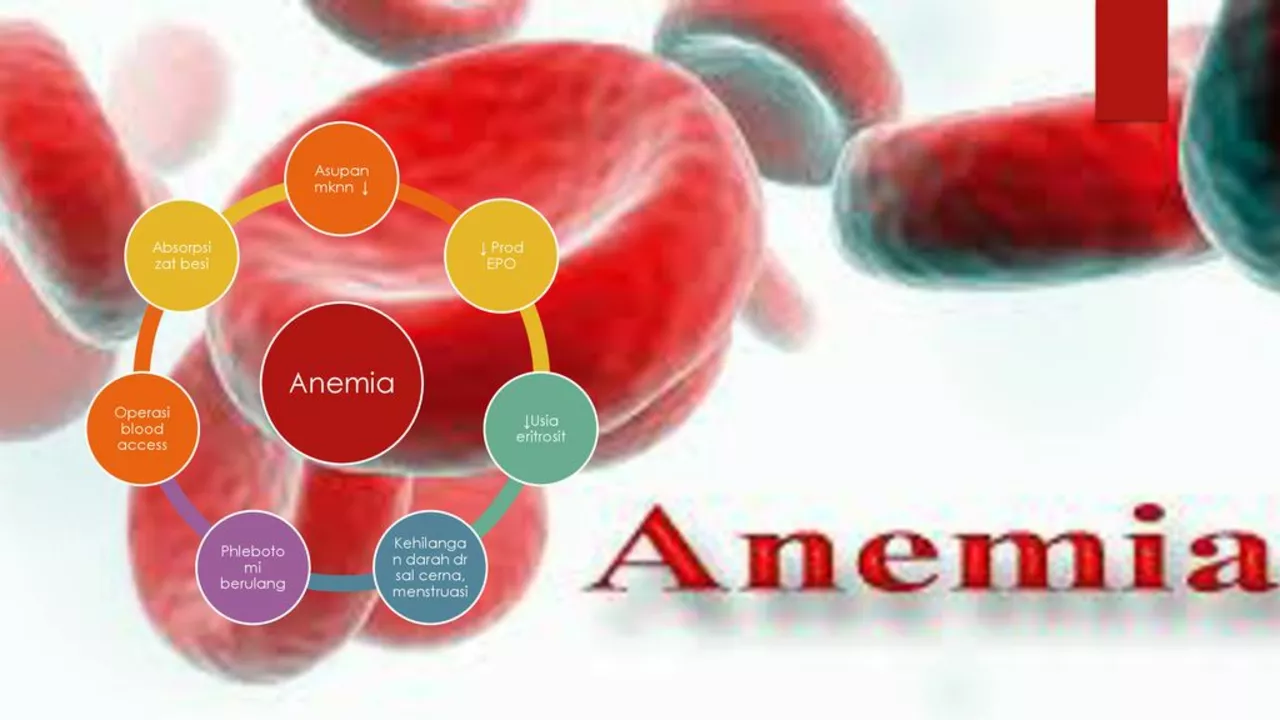Anemia: what it is and what really matters
Feeling tired, pale, short of breath after small efforts? Those are classic red flags for anemia. In plain terms, anemia means your blood can’t carry enough oxygen. That usually comes from low hemoglobin or not enough healthy red blood cells. Some causes are simple and fixable; others need urgent care. This page helps you spot the most common types and gives clear steps you can take.
Common causes and signs
Iron-deficiency anemia is the most common type. It happens when you lose blood (heavy periods, stomach ulcers), don’t eat enough iron, or your body can’t absorb iron. Other causes include vitamin B12 or folate deficiency, chronic inflammation or kidney disease, inherited problems (like sickle cell), bone marrow issues, and some infections or medications.
Watch for these signs: persistent fatigue, paleness (skin or gums), shortness of breath on exertion, fast heartbeat, headaches, dizziness, cold hands and feet, and unusual cravings like eating ice or dirt (called pica). If you’re pregnant, symptoms can come on faster and affect both you and the baby.
How anemia is diagnosed
Your doctor will start with a simple blood test called a complete blood count (CBC). That gives hemoglobin (Hb) levels and mean corpuscular volume (MCV), which hints at the type of anemia: low MCV often points to iron deficiency; high MCV suggests B12 or folate problems. Key follow-up tests include ferritin (iron stores), serum iron, TIBC, reticulocyte count, B12 and folate levels. Sometimes doctors order kidney tests, inflammatory markers, or a bone marrow check if things are unclear.
Treatment depends on the cause. For iron-deficiency anemia, oral iron is the first step. Common dosing is about 100–200 mg of elemental iron daily, often as ferrous sulfate — but many people do better with smaller doses taken every other day to reduce stomach upset and increase absorption. Take iron with vitamin C (a glass of orange juice) and avoid tea, coffee, or calcium-rich foods at the same time.
If you can’t tolerate pills or need faster recovery, IV iron is an option your doctor can arrange. B12 deficiency is treated with injections or high-dose oral B12 depending on the reason. Folate deficiency usually responds to 1 mg daily folic acid. In severe cases — very low hemoglobin or signs like chest pain, fainting, or heart strain — a blood transfusion may be necessary.
Diet helps but won’t always fix medical causes. Eat heme iron from red meat, poultry, and fish; non-heme iron from beans, lentils, tofu, spinach, and fortified cereals. Pair plant iron with vitamin C-rich foods and avoid drinking tea or coffee with meals. If you’re pregnant, vegetarian, or have heavy periods, ask your doctor about screening and possible supplements.
When should you see a doctor now? Get urgent help for chest pain, fainting, severe breathlessness, or very rapid heartbeat. See your GP if fatigue is new, getting worse, or paired with pale skin, unusual cravings, or heavy menstrual bleeding. A few tests can quickly show if anemia is the cause and point to a clear, practical plan to fix it.

